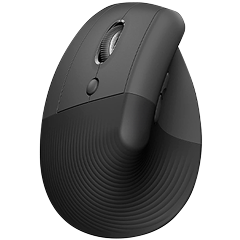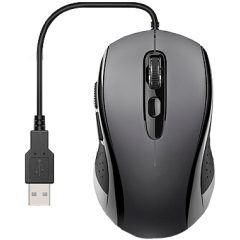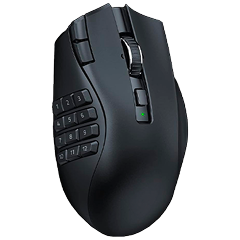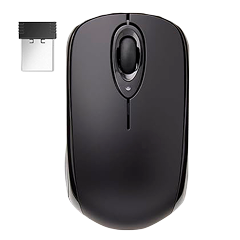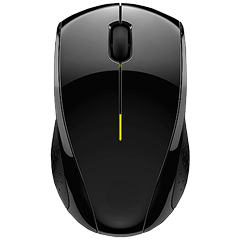Wireless mice have certainly come a long way and it’s no surprise to see them now dominate the market. While they may once have been dismissed as best left to casual browsing, they’re now where you’ll find brands pushing the limits the furthest.
Responsive and packed with features that suit everything from fast-paced gaming to all-day productivity, there’s a huge range of options to choose from. Whether you’re trying to declutter your desk, free yourself from cable drag, or just keep things tidy for hot-desking or hybrid work, a wireless mouse could be a surprisingly impactful upgrade to your setup—if you pick the right one, of course.
Because as with all things tech, while they may often look similar, not every wireless mouse is the same. Some are blazing-fast tools tuned for pro-level esports precision, others are designed with comfort in mind for a long work day, and plenty sit somewhere in between.
The trick is knowing what to look for and what to avoid so this guide is here to walk you through the pros, cons, and key considerations when shopping for a wireless mouse that suits your needs.
So, Why Go Wireless?
From game controllers to phone chargers, and across all kinds of modern tech, there’s no denying the appeal of cutting the cord. Wireless mice give you a cleaner, more flexible setup with fewer things cluttering your desk. They’re particularly handy if you use your computer in multiple locations, no cable means no scrabbling around to find which USB port it’s plugged into, and nothing to get caught or tugged as you move between workstations. For laptop users in particular, it’s a natural fit.
In the early days, and admittedly we’re going back quite a way here, wireless mice had a bad reputation for performance. Input lag, stuttery connections, and battery life that made you keep a spare set of AAs on hand. Thankfully that’s mostly ancient history now and these days, most wireless mice are near-indistinguishable from wired ones in terms of responsiveness and reliability, especially high-end options that make use of their own wireless connection protocols.
Wireless vs Wired: What You’re Gaining and What You’re Giving Up
Like many, I’m a big fan of wireless mice but let’s be clear: wired mice still have an important place, especially if you’re chasing every last ounce of performance. A wireless mouse won’t instantly be the better choice for some people. Wired connections are instant, stable, and not going to give up on you midway through a game or task. These can be beneficial traits in certain scenarios, but in real-world use, especially outside of esports or ultra-competitive gaming, wireless mice have all but closed the gap.
These days for most users, a high-quality wireless mouse is every bit as responsive as a wired one, especially if it’s using a USB dongle for connectivity. You’ll keep all that performance while gaining the freedom to move your mouse however and wherever you like, with no cable drag to throw off your aim or fatigue your wrist. Productivity users will love the portability, and minimalists will appreciate the cleaner desk aesthetic.
The trade-offs? Usually a slightly higher cost, the need to monitor your battery life (even if that’s now measured in weeks or months), and the potential for interference or dropouts.
Key Features to Look For
Whether you’re shopping for work, play, or a bit of both, there are some key things that separate a great wireless mouse from a mediocre one. Let’s walk through the features and factors that really matter and that we value highest when reviewing and comparing wireless mice.
Battery Life
This one is unique to wireless mice and a bit of a no brainer when it comes to a crucial spec. No one wants a mouse that dies mid-project or during a tense moment in game. For battery life to be considered ‘great’, we look for models that offer at least 50 hours of use between charges with over 100 hours being our gold standard. Bonus points for power-saving modes or quick-charging features too.
Connection Type
We’ll have more on this below, but the short version is that dongle-based connections relying on a 2.4GHz connection are usually best for gaming or high-speed use, while Bluetooth is fine for casual productivity and multi-device setups. Some premium mice offer both for extra flexibility, a nice bonus that can make hotdesking simpler.
Sensor Quality
This one is true of all mice and just because it’s wireless doesn’t mean you need to forgo an impressive sensor. Tracking is essential, even if you’re not a gamer. A mouse that feels sluggish or inconsistent will quickly drive you mad so look for DPI adjustability (800–1600 is the sweet spot for most people) and sensors that support high IPS (tracking speed, aim for 150+) and acceleration ratings (something around 20 or more should be fine).
Comfort and Ergonomics
If you’re using a mouse all day, shape matters—a lot. One of your earliest considerations should be to find a wireless mouse that supports your grip style (palm, claw, fingertip), fits your hand size, and has a design that tackles wrist strain in some way. You don’t need to go all out with a vertical mouse, sculpted ergonomic mice or ambidextrous options can both work, it all depends on your preference.
Software and Customisation
Many wireless mice from major brands come with companion software that lets you tweak settings like DPI, assign macros to any additional buttons, or set up profiles for different tasks. This may not matter to some people looking for the simplest experience, though it’s generally worthwhile checking what downloads are available beforehand.
Multi-Device Support
A growing number of wireless mice let you switch between devices with the tap of a button and it’s well worth seeking this feature out. This is hugely useful if you regularly swap between a laptop, desktop, or even mobile devices like a phone or tablet. If you’re going Bluetooth, ensure it supports being synced with multiple devices at the same time to avoid future headaches.
Charging Method
USB-C charging of internal, rechargeable batteries is now both the norm and the gold standard though you’ll still find some cheaper mice relying on replaceable AA batteries. Some premium mice even support wireless charging via specific mouse mats or come with magnetic charging docks.
Common Mistakes to Avoid
It’s easy to fall into a few traps when shopping for a wireless mouse, especially when brands often push flashy headline specs with slick marketing. We’ve covered what you should be looking for, now here are a few things to watch out for.
Buying on DPI alone
Manufacturers love to slap huge DPI numbers on product pages, banking on that basic instinct of shoppers thinking bigger number = better device. The reality for most people however is that anything above around 3,000 DPI is overkill and likely to make your experience worse. Instead, look for mice that offer an adjustable DPI so you can dial things in.
Overlooking compatibility
Much like some controllers only working with a single gaming console, some wireless mice can be picky with which devices and operating systems they’re compatible with. If you’re planning to use the mouse with multiple devices, check that it supports your platform (Windows, macOS, ChromeOS, etc.) and connection method. Bluetooth is generally quite consistent across the board but there may be specific versions of the same mouse that are more finely tuned for different operating systems, particularly when it comes to software support.
Assuming all wireless mice are equal
A cheap, off-brand wireless mouse might get the job done for basic browsing, but it won’t give you the same overall experience. This may not be immediately apparent either, it’s more a death by a thousand cuts with unresponsive movements or connection issues becoming a serious annoyance and hit to your gameplay or productivity. You don’t need to spend a fortune, but don’t expect an equal experience from bargain-bin options.
Ignoring weight and size
There’s quite a variance between the smallest and largest wireless mice on the market and it’s crucial to consider your needs, use case, and physical attributes when comparing. A super light mouse may be great for high-performance gaming but is less likely to be comfortable through a full work day. A beefier, contoured wireless mouse will be an excellent, ergonomic desk companion but could quickly become annoying to lug between multiple workstations.
Connection Types Explained
One of the biggest points of confusion with wireless mice is how they actually connect. You don’t really need to understand the magic (science) of it, but here’s a quick breakdown of the three most common options and which they’re best suited to.
2.4GHz (USB Dongle)
This is the preferred choice for gamers and users who want minimal input lag. It uses a tiny USB receiver to establish a fast, stable link with your PC. The downside? You need a free USB-A port, which somewhat defeats the purpose of a wireless mouse, and if you lose the dongle, well you now have a paperweight.
These connections are also prone to interference which can introduce stutters and general instability, particularly when there’s distance and objects between the mouse and receiver. Thankfully most higher-end devices that rely on this connection will include an extension cable to bring that receiver as close as possible, but it begins to chip away at the benefits of that clean desk space.
Bluetooth
This is your best bet for simplicity and compatibility across multi-device setups. Bluetooth mice pair directly with computers, mobile devices, and even some smart TVs—no dongle required. They’re generally a bit slower than 2.4GHz options and not well suited for gaming as a result, but the convenience and wide compatibility are big selling points. Just be aware that older Bluetooth standards in particular may introduce a bit more input lag and impact battery life too.
Proprietary Wireless Systems
Some more premium brands offer their own native, enhanced wireless protocols; Logitech’s Lightspeed for example, or Razer’s HyperSpeed. These typically combine the best of both worlds with low latency, easy connectivity, and excellent power efficiency. If you’re using other wireless devices from these brands too, their dongles may support multiple devices at once, allowing you to connect both a mouse and keyboard through the same single dongle.
Are wireless mice good for gaming?
For the most part, absolutely. This hasn’t always been the case, but these days the best wireless gaming mice perform just as well as their wired counterparts. Brands like Logitech, Razer, SteelSeries, and Corsair all offer top-tier wireless options that deliver elite-level sensor performance, long battery life, and featherweight designs that won’t hold you back. If you need a little help with what to look for in a great gaming mouse, check out our buying guide for those, all the same rules apply to their wireless versions.
While wireless mice have almost completely caught up to the performance levels of wired options, most esports pros still prefer cables for one simple reason: reliability. Wired connections offer zero latency, no risk of signal dropouts, and no battery concerns—all crucial requirements in competitive play. Without an internal battery, mice also tend to be lighter which matters for fast, precise movements.
It’s time to cut the cord.
If you’re still clinging to a wired mouse out of habit, now’s probably the time to reconsider. Today’s wireless mice are fast, reliable, and can be surprisingly affordable for what they offer. Whether you’re a gamer chasing every advantage or a productivity-focused professional looking for clean aesthetics, there’s a wireless mouse out there that fits.
There are a plethora of options out there so make sure to focus on the right things that we’ve covered in this guide: solid battery life, a dependable connection type, a shape that suits your hand, and a sensor that won’t let you down. You don’t have to spend loads either, just explore the market, avoid the fluff, and choose based on how you’ll actually use the thing day to day.


